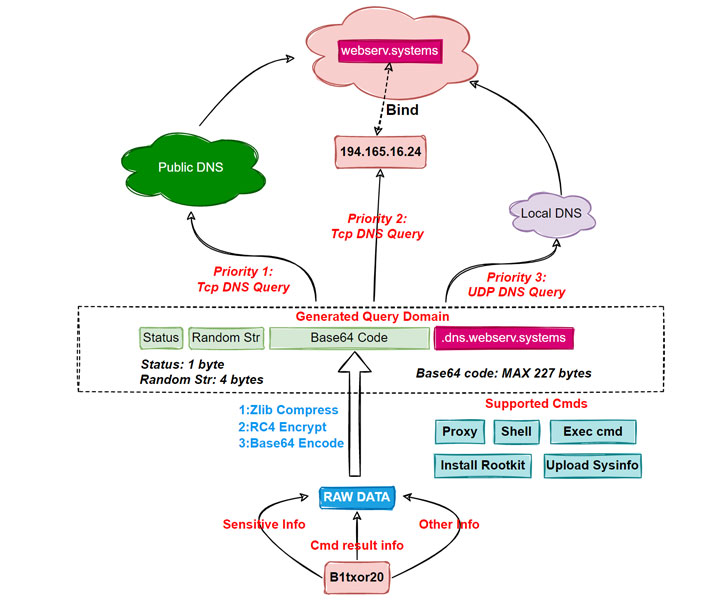A previously undocumented backdoor has been observed targeting Linux systems with the goal of corralling the machines into a botnet and acting as a conduit for downloading and installing rootkits.
Qihoo 360’s Netlab security team called it B1txor20 “based on its propagation using the file name ‘b1t,’ the XOR encryption algorithm, and the RC4 algorithm key length of 20 bytes.”
First observed propagating through the Log4j vulnerability on February 9, 2022, the malware leverages a technique called DNS tunneling to build communication channels with command-and-control (C2) servers by encoding data in DNS queries and responses.
B1txor20, while also buggy in some ways, currently supports the ability to obtain a shell, execute arbitrary commands, install a rootkit, open a SOCKS5 proxy, and functions to upload sensitive information back to the C2 server.
Once a machine is successfully compromised, the malware utilizes the DNS tunnel to retrieve and execute commands sent by the server.
“Bot sends the stolen sensitive information, command execution results, and any other information that needs to be delivered, after hiding it using specific encoding techniques, to C2 as a DNS request,” the researchers elaborated.
“After receiving the request, C2 sends the payload to the Bot side as a response to the DNS request. In this way, Bot and C2 achieve communication with the help of DNS protocol.”
A total of 15 commands are implemented, chief among them being uploading system information, executing arbitrary system commands, reading and writing files, starting and stopping proxy services, and creating reverse shells.





